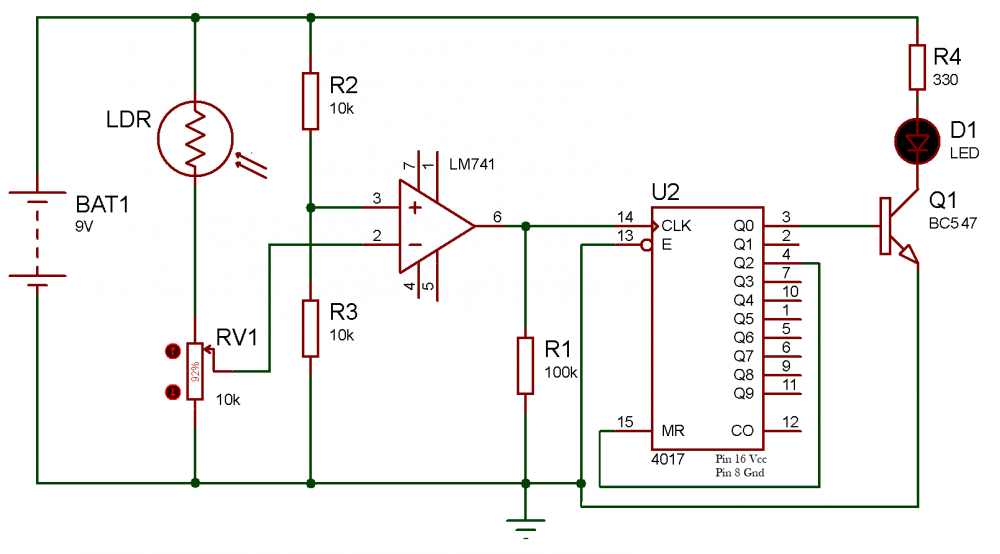Hello guys, i am making a wireless switch circuit using LM741 Opamp IC following the below circuit diagram. But the circuit is not working, Is there any mistake in the circuit ? I double checked the connections but didn't find any false connections, so I think op-amp IC is faulty. So is there is any way to test opamp whether it is working properly or not?
Thank you....

Hi,
The best and quick way to check if you Op-Amp is working in good condition is by testing it as voltage follower.
You can find complete discussion here: https://circuitdigest.com/forums/analog-electronics/how-check-if-my-op-…
Thanks guys, I tested my Op-amp and found that it is working properly. So I again checked my circuit and found that the culprit was my 9V battery.
When measured at no load the battery has a potential of 7.2V but when connected to load it drops to 3.7V which is not enough for the circuit to work. I replaced the battery with a fresh 9V one and the circuit is not working fine.
Thanks again
marry roser
Working of the circuit is simple and straight forward. The IC to be tested is configured in voltage comparator mode. Voltage at pin 3 (non inverting pin) is fixed where voltage at pin 2 (inverting pin) varying due to charging and discharging of capacitor C1.
jaksonlee
Working of the circuit is simple and straight forward. The IC to be tested is configured in voltage comparator mode. Voltage at pin 3 is fixed where voltage at pin 2 varying due to charging and discharging of capacitor C1.Where battery is connected to the circuit the voltage at pin 3 is high in compare to voltage at pin 2 due to charging of capacitor, as a result output of IC become high and LED start to glow.
At this instant capacitor start to charge through the resistor R4. When charge (voltage) of capacitor exceed voltage at inverting pin (pin 2), the output of IC become LOW, as a result LED stop to glow. When voltage at capacitor become higher then inverting input pin it start to discharge and again output of IC become high. This high and low output of IC generate square wave and cause LED to blink.
The circuit of operational amplifier 741 tester comprises two diode and very few passive components and a 741 IC to be test. All the components are connected as shown in circuit diagram. A LED1 is used to indicate either IC is good or fault. Blinking LED1 indicate IC is good.
Working of the circuit is simple and straight forward. The IC to be tested is configured in voltage comparator mode. Voltage at pin 3 is fixed where voltage at pin 2 varying due to charging and discharging of capacitor C1.Where battery is connected to the circuit the voltage at pin 3 is high in compare to voltage at pin 2 due to charging of capacitor, as a result output of IC become high and LED start to glow.
At this instant capacitor start to charge through the resistor R4. When charge of capacitor exceed voltage at inverting pin, the output of IC become LOW, as a result LED stop to glow. When voltage at capacitor become higher then inverting input pin it start to discharge and again output of IC become high. This high and low output of IC generate square wave and cause LED to blink.


Abhishek
Joined May 19, 2015 402Tuesday at 03:13 PM
Circuit diagram looks fine, I hope you have connected Pin 7 and 4 to the power and ground respectively.
Other than that if you want to test the op-amp IC, then you just need few resistors and diode. Below is the circuit to test the Op-amp IC
If LED blinks means that op-amp is fine and if LED will remain on or off means that op-amp is faulty.
Instead of making this tester circuit try with another Op-amp, and if you dont have 741 then, try with some other op-amp IC. Looking at your circuit I think any op-amp IC should work, just check the pin configurations.